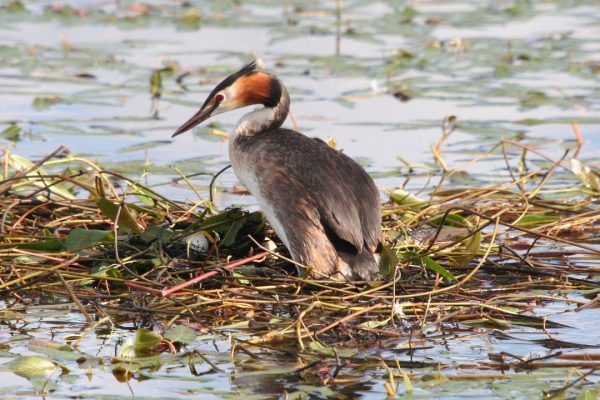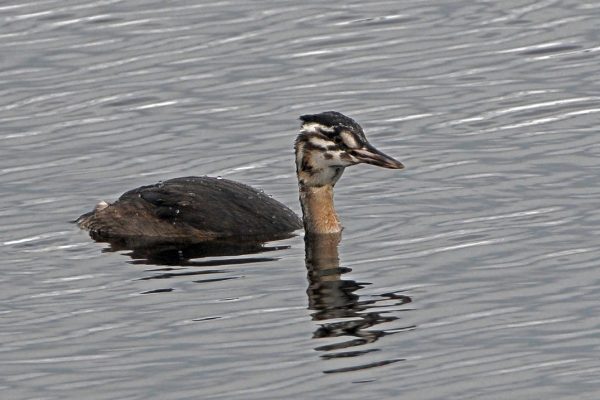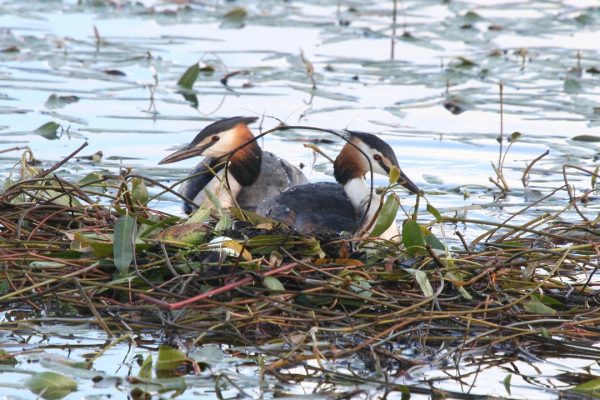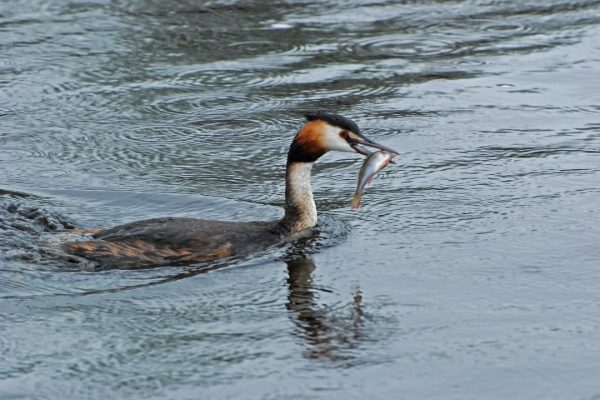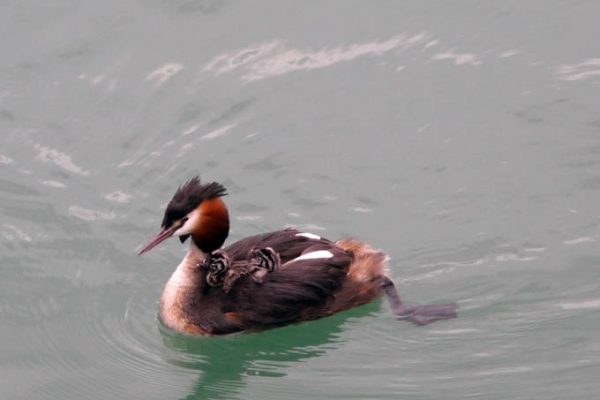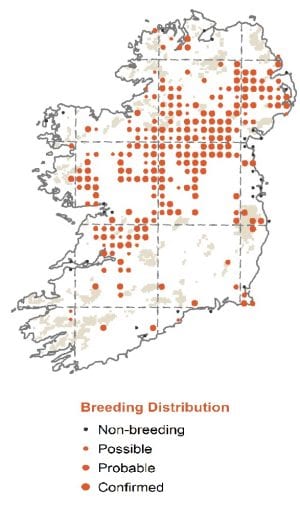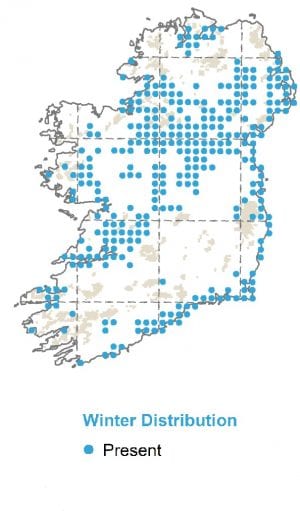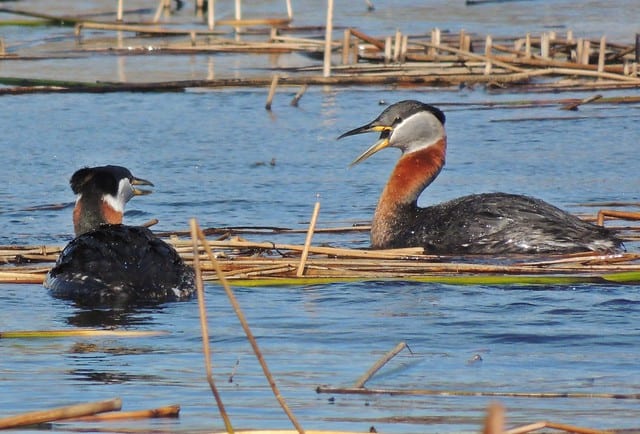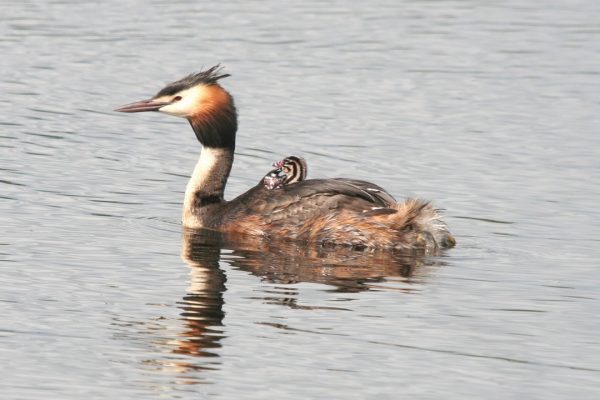
Great Crested Grebe
| Irish Name: | Foitheach mór |
| Scientific name: | Podiceps cristatus |
| Bird Family: | Grebes |
amber
Conservation status
Conservation status
Status
Resident along all Irish coasts and on larger freshwater bodies.
Identification
Resident, numbers increase during the winter due to immigrating birds.
Voice
Highly vocal giving loud far-carrying calls - mostly harsh, nasal, open-throated or guttural.
Diet
Mainly fish, sometimes supplemented with aquatic invertebrates.
Breeding
Age of first breeding: 2 years. Great Crested Grebes breed on large, shallow eutrophic loughs, and along canals and slow flowing rivers – wetlands with emergent vegetation bordered by open water are generally selected. Nests are a large mound of aquatic vegetation and are usually well concealed within reeds.
Wintering
Winter distribution is widespread with greatest concentration in the north midlands and northeast and birds from the continent join the resident population. Outside the breeding season Great Crested Grebes are often solitary with some birds moving to the coast through the winter. Occasionally, large congregations form for short periods. Birds start returning to breeding areas from mid-February.

